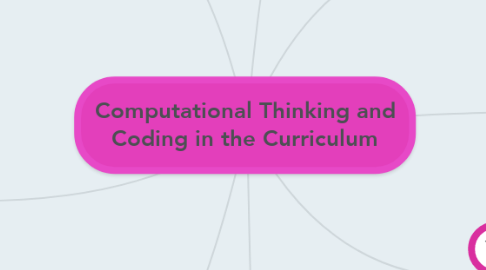
1. Year 4
1.1. Further develop understanding and skills of computational thinking (categorising and outlining procedures). Opportunity to create a range of solutions modelling simplified real world systems.
1.1.1. Identify different purposes for digital systems and peripheral devices.
1.1.2. Use visual programming, including algorithms and branching, to represent data in a range of ways.
1.1.3. Use software to represent different types of data.
1.1.4. Use algorithms to design a solution for a digital task.
1.1.5. Independently/collaboratively create and communicate ideas and information for solutions.
2. Year 5
2.1. Further develop understanding and skills in computational thinking (identify similarities in different problems and describe smaller components of complex systems. Create a range of solutions. Explore the role individual components play in processing and representing data.
2.1.1. identify components of digital systems and their basic functions
2.1.2. Represent data using code to collect, store and present data.
2.1.3. Create design solutions and design, follow and represent diagrammatically a simple sequence of algorithms
2.1.4. Identify available resources and create algorithms to assist in decision making
2.1.5. Independently/collaboratively plane, develop and communicate ideas and information
3. Year 6
3.1. Develop further understanding and skills in computational thinking (identifying similarities in different problems and describing smaller components of complex systems). Create a range of solutions that involve more than one branching solution. Consolidate understanding of the role individual components play in processing and representing data.
3.1.1. Outline interactions between components and basic functions within digital systems
3.1.2. Use software to collect, sort, interpret, present and manipulate data for a range of purposes.
3.1.3. Use simple visual programming to design, modify, follow and represent both diagrammatically and in written text algorithms
3.1.4. Identify available resources to design a solution for a digital task using algorithms
3.1.5. Independently/collaboratively plan, develop and communicate ideas and information solutions.
4. Where Is It Found?
5. Foundation
5.1. Learning focuses on developing foundational skills in computational thinking and engage in personal experiences using digital systems
5.1.1. Label digital systems
5.1.2. Represent data using pictures, symbols and patterns.
5.1.3. Explore, make and evaluate simple solutions.
6. Year 1
6.1. Expand on foundational skills in computational thinking and confidently engage in personal experiences using digital systems
6.1.1. Identify specific features of digital systems
6.1.2. Represent data using pictures, symbols and patterns
6.1.3. Independently create and share sequenced steps for solutions
7. Year 2
7.1. Broaden students prior skills in computational thinking and provide opportunities to engage in personal and social experiences when using digital systems
7.1.1. Use digital systems for a specific purpose
7.1.2. Select, present and use data using a variety of digital tools online
7.1.3. Independently/collaboratively organise information to safely create and share sequenced steps for solutions
8. Year 3
8.1. Further develop understanding and skills of computational thinking (categorising and online procedures), provided with opportunities to create solutions.
8.1.1. Explore and recognise different purposes of digital systems
8.1.2. Develop ideas with algorithms and branching, using simple software to collect and present data.
8.1.3. Independently/collaboratively plan, create and communicate sequenced steps.
